
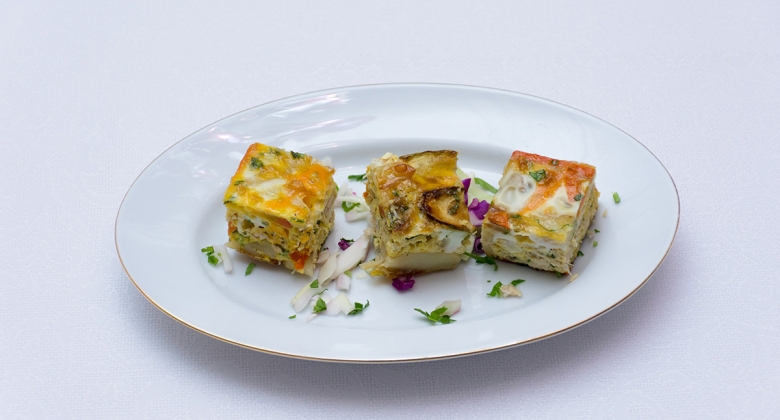
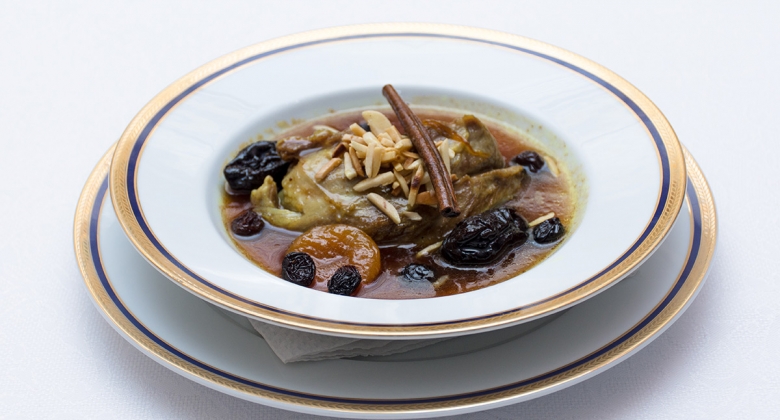
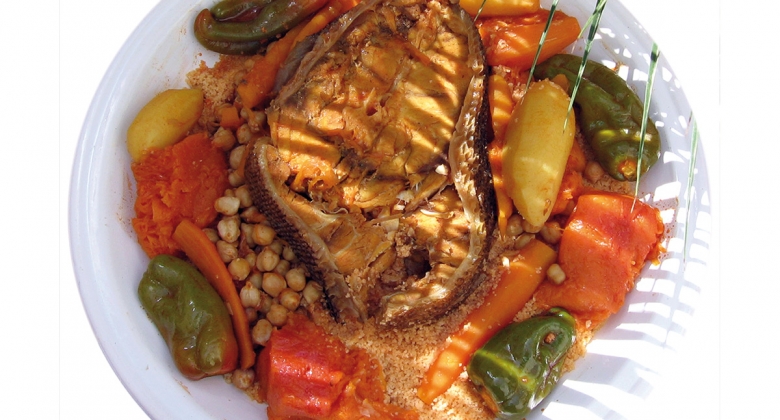
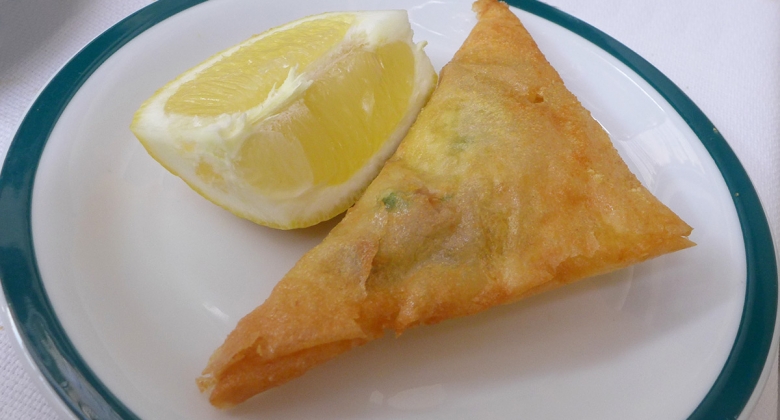
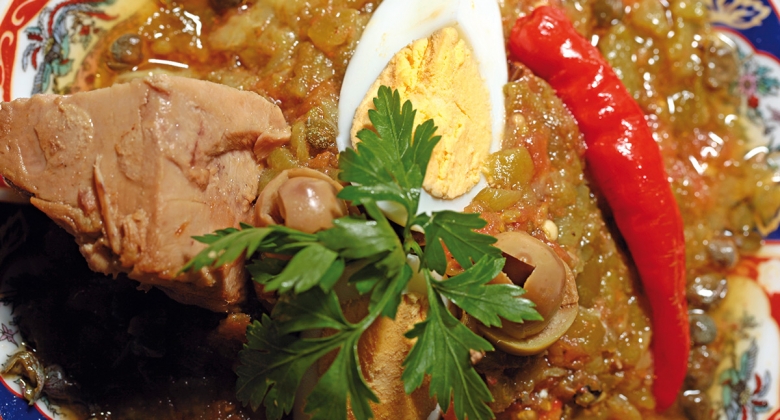
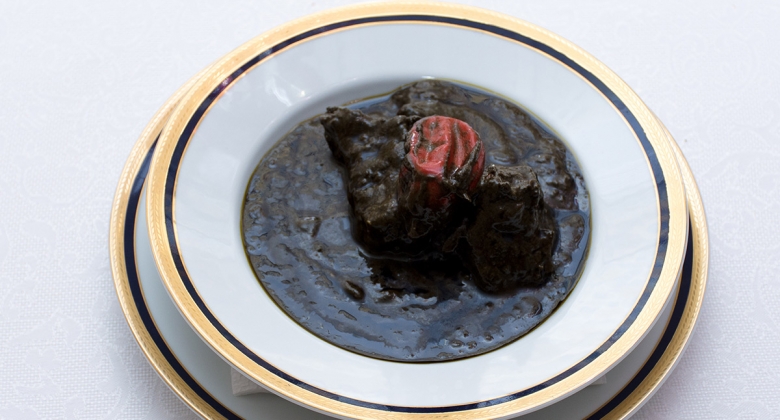
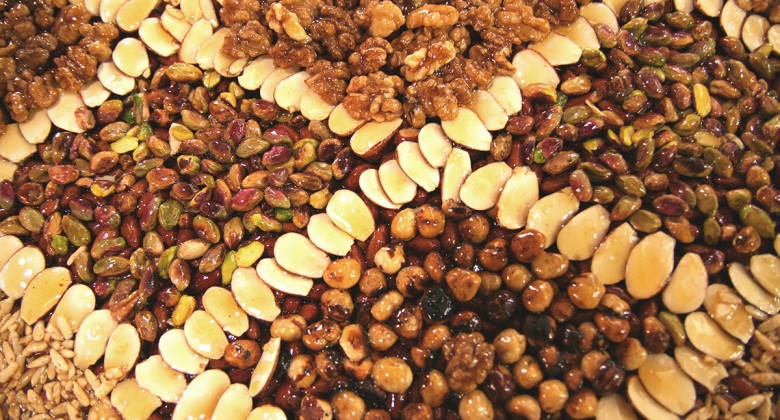
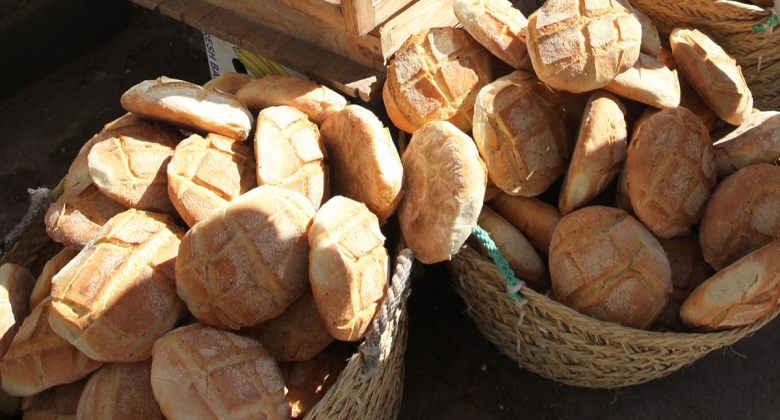
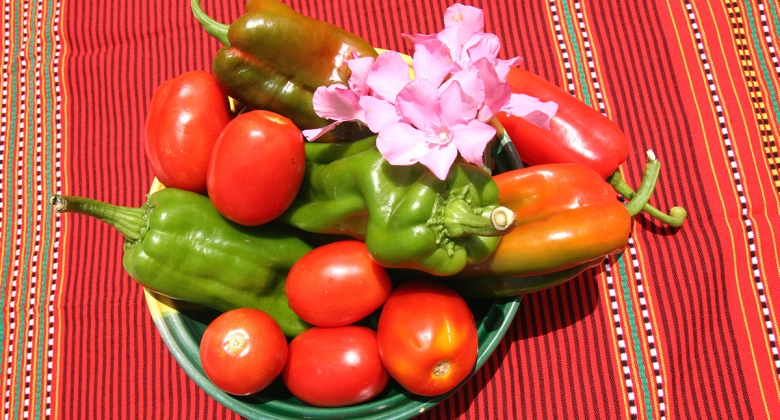
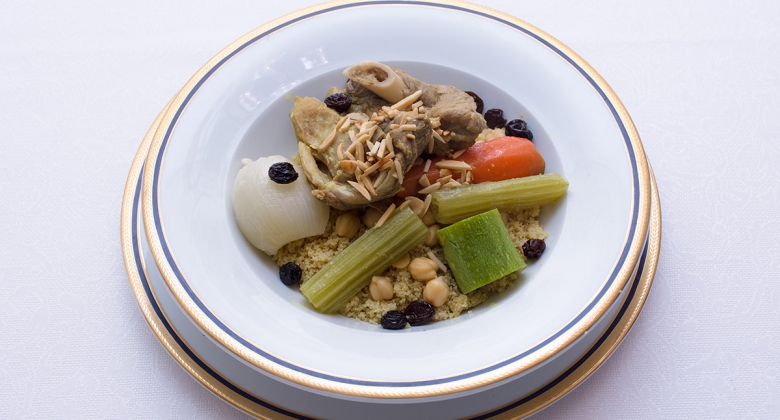
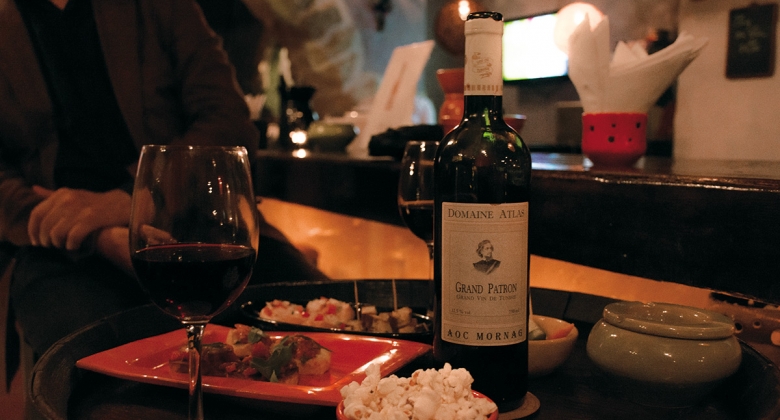
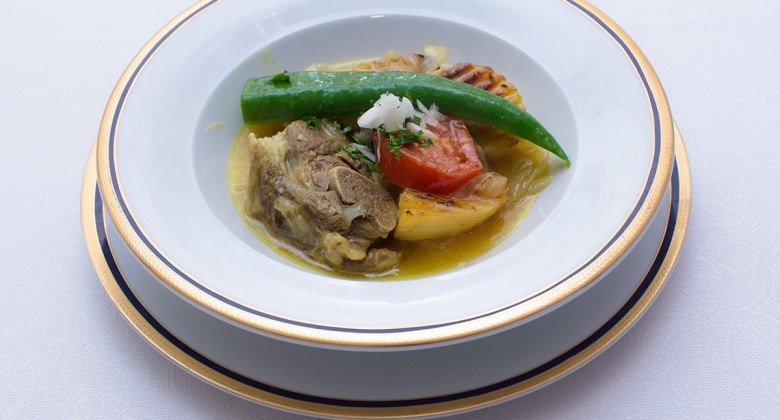
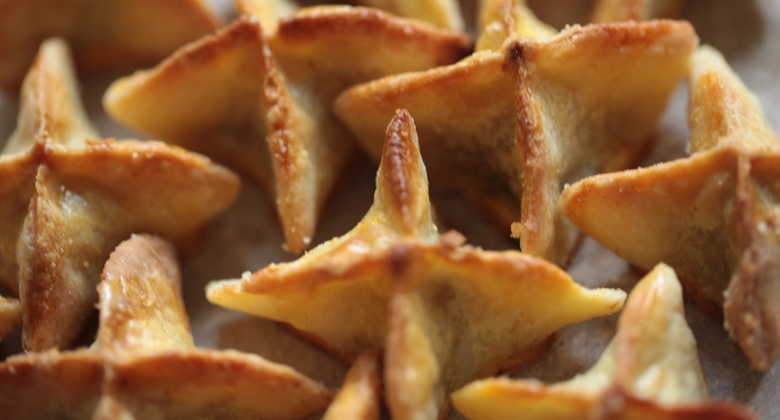
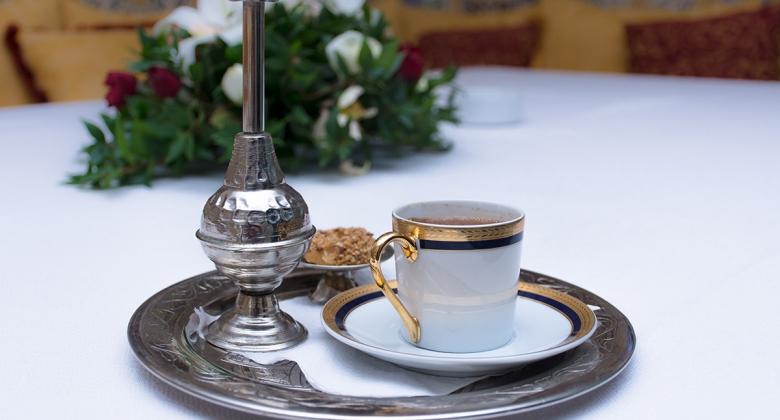
Stroll through the markets, admire a display of spices or pastries, taste the countless varieties of bread, take a seat in one of the small restaurants of the traditional districts or in a rising star of Tunisian gastronomy… you will soon find that in Tunisia, the pleasures of the palate are a priority!
| Local ingredients | Olive tree and vine, chili pepper and date-palm, watermelon and pomegranate, lamb and grouper… the Tunisian harvest is bountiful and will delight gourmets. |
| A thousand and one couscous | A generous helping of fragrant and spiced semolina, garnished with pieces of meat, squash, cabbage, carrot and chickpeas: who hasn’t heard of couscous? This very old Berber dish is always served at family reunions and special occasions, in the city just as in the countryside. In reality there is not a single couscous but an infinite variety of recipes. On the coast, meat is readily replaced by fish. On the islands of Kerkennah, they prepare a couscous with stuffed squid. In Cape Bon, a region known for its growing prowess, the dish is particularly rich in vegetables: courgettes, peppers, beans, turnips… In the Saharan south, the speciality is barkoukech, a couscous with coarse grains garnished with meat and small dried fish. In several regions, a savoury-sweet couscous is served to celebrate the Muslim New Year (Ras el-Am). It is garnished with dried meat, boiled eggs, raisins, dates and sometimes even sweets: the pleasant sweet flavours are a good omen for the year to come. Only a few restaurants serve quality couscous because the dish demands many hours of preparation. No matter what, every Tunisian will tell you: the best couscous their mother’s! |
| Some Tunisian classics | Egg brik, complet poisson, mloukhiya, Tunisian tajine, chorba frik… discover the variety of Tunisian cuisine through five specialities. Egg brik: it’s a kind of thin pastry, crisp and golden, folded in two, enclosing a soft cooked egg and herbs. Sheets of homemade “brik” pastry are thicker and tastier than industrially made sheets, and can be bought in the markets. As the name suggests (derived from the Turkish börek), it has Ottoman origins. Complet poisson (full fish plate): the dish consists of a beautiful grilled fish, accompanied by fried potatoes and tastira: a mix of sweet peppers, tomatoes and eggs cooked in oil, then chopped up and seasoned. It’s the emblematic dish served in the restaurants of La Goulette, the small coastal town, once the meeting place of the Jewish community of Tunis. Mloukhiya: its appearance is as unusual as its name: pieces of meat enveloped in a thick dark green sauce. But some would go to the gates of hell for a bite. This dish is made from the dried and ground leaves of a plant known as coretian. It takes at least six hours to prepare! Tunisian tajine: bearing no resemblance to the Moroccan tajine, the Tunisian tajine looks somewhat like the Spanish tortilla. It is cooked in the oven and made of eggs, cheese and potatoes. It can be stuffed with meat or vegetables, or garnished with puff pastry. Delicious on its own or with side dishes. Chorba frik: frik is cracked wheat. It is an ingredient in this comforting meat and tomato soup, flavoured with coriander leaves. Drizzle with lemon juice before eating. |
| Regional recipes | Each region, each village has its own variations of traditional classics. A brief overview of a few particularly memorable dishes... Djerban rice: the land in Djerba, the large southern island, is arid and best suited to the cultivation of leafy vegetables. These thus make frequent appearances in the cuisine. In this dish, minced and spiced meat and sheep liver are added to the rice. Everything is steamed together with parsley, fennel leaves and chopped spinach. Sfax Charmoula: as an accompaniment to fish, the people of Sfax liberally serve this sweet sauce made from onion, cinnamon, raisins, simmered over low heat for many hours. Kef Borzguen: in Kef, in the mountains of the northwest, this sweet dish is served at special occasions to accompany lamb. It is made from couscous semolina garnished with dates, drizzled with sweet milk and decorated with dried fruits. Fondouk el-ghalla: in the capital, they serve large quantities of this dish nicknamed “fruit (and vegetable) market”. It’s a mix of various vegetables stuffed with meat, cooked in the oven and covered in a tomato sauce. Nabeul Mrouziya: this savoury-sweet dish is made from slow-cooked lamb, covered with a sweet sauce flavoured with raisins, almonds, honey and cinnamon. |
| Sweets and pastries | If there is one domain where the refinement of Tunisian cuisine can be said to be at its peak, it is without a doubt pastry. Puff pastry, marzipan, crushed pistachios, honey, rosewater and orange blossom water are combined in innumerable recipes. These exquisite little sweets are served alongside mint tea or Turkish coffee. A holiday dessert: the Assida Zgougou |
| Tradition of the vine | Drawing on French expertise, Tunisian wine production today offers a large range of white, red and rosé wines. In this way, the country renews one of its old traditions, as wine was already appreciated in ancient Tunisia. A great agronomist from Carthage, Magon, whose books inspired Roman agriculture, gave advice relating to its production. Wine production began again in the 20th century. In recent years, it has diversified and remarkably improved. Today there are numerous wine producing domains. You may have already heard of well-regarded Tunisian wines such as Vieux Magon, or Muscat from Kelibia? Then try a Soltane, a Grand Patron Reserve, a Kurubis, a Chateau Mornag… An amateur tip: open your bottle an hour before drinking to discover the best side of Tunisian wine! |
Olive tree and vine, chili pepper and date-palm, watermelon and pomegranate, lamb and grouper… the Tunisian harvest is bountiful and will delight gourmets.
Tunisia is classed amongst the best producers of olive oil in the world. Olive trees are found everywhere, from the mountains of the northwest to the pre-Saharan regions.
Olive oil is an indispensable ingredient in Tunisian cuisine. Try it alone with bread, or accompanied with a little harissa: this spicy garnish made from garlic and dried chili pepper is a feast for the tastebuds!
Hot or sweet peppers make an appearance in many other dishes. Grilled with a little tomato then relieved of its skin and seeds, crushed, seasoned and finished with a drizzle of olive oil: you have mechouia, a delicious salad side dish.
The Bedouin shepherds herds of sheep provide rich meat. The fishing harbours, all the treasures of the Mediterranean: grouper, sea bream, sea bass, octopus, cuttlefish and squid.
Taste an incredible variety of fruits, no matter the season. In winter, the dates from the southern oases and the many kinds of orange both sweet and sour, bergamot, clementine, mandarin… In summer, white or yellow melons, sweet and refreshing watermelons, as well as figs and succulent grapes. In autumn, pomegranates. In spring, apricots or mulberries…
Enough to convince you that Tunisia is full of flavour!
If there is one domain where the refinement of Tunisian cuisine can be said to be at its peak, it is without a doubt pastry. Puff pastry, marzipan, crushed pistachios, honey, rosewater and orange blossom water are combined in innumerable recipes. These exquisite little sweets are served alongside mint tea or Turkish coffee.
A few confections and sweet treats:
- baklawa, of Turkish origin, combines crushed almonds and pistachios with thin and crispy sheets of pastry.
- kaak warqa, a thin and delicate cake, perfumed with rosewater and in the form of a ring.
- maqroudh, a typical speciality from Kairouan. A small cake of semolina stuffed with dates, fried in oil and coated with honey.
- mahchi tataouine, a speciality from the southeast, a pastry cigar stuffed with almonds, perfumed with cinnamon and orange blossom water.
- assida zgougou, a festive dessert, is a cream perfumed with pine nuts from Aleppo pines. It is eaten to celebrate the birth of the Prophet (Mouled).
A holiday dessert: the Assida Zgougou